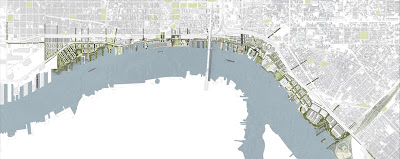Plans unveiled for the “New” Fairmount Park
 |
| Fairmount Park Waterworks, South Garden | Philadelphia |
If you thought Philadelphia’s famed Fairmount Park could not get any better, you would be mistaken. The funny thing about FP is that it gets mixed results from those who live around it … seriously, it does.
Some love Fairmount Park, and some hate it. Some think its potential has been reached, and some think there is only room for improvement. Some Philadelphians use it every day, and some locals have never set foot in it.
For being one of the world’s largest urban park systems (aka “The Largest Landscaped Urban Park in the World,” according to Wikipedia), I personally feel that the park itself is underutilized. There are so many different elements to this 9,200 acre Philadelphia green space, that it’s too hard to recognize all of them. The most recognizable places include (but are not limited to): Philadelphia Museum of Art, Philadelphia Zoo, Boathouse Row, Please Touch Museum, and Bartram’s Garden.
And that’s just the tip of the iceberg.
What I really love about Fairmount Park is that it’s so well protected and preserved, considering it’s located in the 5th largest US city. What was originally an 1858 agreement to protect Philadelphia’s main water supply (aka the Schuylkill River), has turned into a phenomenal public park system (63 different neighborhood parks, to be exact). This gives all Philadelphians the option to escape the busyness of city life (any day of the week), and still be within close proximity to their homes.
Okay, that should be enough background and history to get us started here.
Close to 1 year ago, Philadelphia Parks & Rec teamed up with local community groups and Penn Praxis (the design arm of UPenn) to discuss how East/West Fairmount Park could be better connected and utilized as a whole. The result, a comprehensive plan called “The New Fairmount Park.”
As to not deviate from my usual approach, let’s break this jawn down in traditional PUL fashion:
– “Why East & West Fairmount Park?”: Well, simply put, East/West Fairmount Park are the core of Fairmount Park as a whole. They both touch Center City (East) and University City (West), which both happen to be the biggest growth areas in Philadelphia today. On top of that, no other city in the US can match East/West’s combined size and overall value to the health of local residents. From a tourism standpoint, these 2 park sections draw 7M visitors every year, are home to some of Philadelphia’s most significant cultural institutions, and offer a wealth of sculptures and public art. In other words, East/West are a big draw for tourists. From a recreational standpoint, there are 54 trail miles, 16 creeks, and 4 playgrounds. In other words, East/West serve as a huge public playground for those younger and older alike.
– “The Big Vision”: This one has to be seen on the plan itself. In general, it capitalizes on some of FP’s greatest assets: creeks, trails, and park entrances. To see some of the graphics depicting the plan’s ideas and calls-to-action, click here.
– “First-Steps”: With any comprehensive plan, the goal is to start small by meeting short-term goals for long-term gains. That’s exactly what the plan calls for in this section. Things like improving watersheds, traffic studies, and pedestrian accessibility all contribute to exposing the park’s physical attributes and overall beauty. Simple things like painting bike lane lines on bridges that cross the Schuylkill River will help connect East and West. Making park entrances more visible to those walking, riding, or driving by will increase Fairmount Park’s curb appeal and encourage more usage. Steps like these do not cost millions of dollars to complete, they just require a plan and some attention to detail.
– “Focus Areas”: This section of the plan focuses on 5 key areas, and they mostly revolve around the same simple concept: bring people to the water sources in Fairmount Park. By following the 16 creeks that flow down to the Schuylkill River, park users will have a natural path from uphill to river (and vice-versa). The funny thing about the neighborhoods surrounding FP, is that many residents in those communities don’t realize how easy it is to access the park. Both natural and man-made barriers are the culprits. The goal is to use waterways as a guide to increasing park usage and park access.
Done and done.
My hope is that this blog post will serve as a launching point for all PUL readers to see how great Fairmount Park really is, and how much greater it will become in the not-too-distant future.

